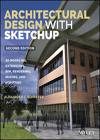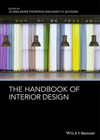If, unlike the Congress or the President, we offer no silver bullet for the recession, we can all search for silver linings. While architects love a new construction site, strategically, preservation is sounding better and better—whether the historic variety or the act of saving or revitalizing ordinary structures. In a down economy, it makes good sense to make the most of what you already have.

The arguments for historic or plain preservation are growing, and to expand the analogy, compounding, at a time that stock markets have contracted. Inertia, shrinking budgets, and sheer neglect will save some buildings, as public programs and donors evaporate, but preservation may prove to be a successful strategy for your firm’s future. Consider the advantages of retaining or revitalizing structures: The time is right for most of us to save.
Preservation is environmentally correct and the most sustainable thing that you can do. This may prove to be the biggest boon to the movement, and represents the best of a long and growing list of reasons to preserve. First, the embodied carbon already residing in the timbers or steel constitutes a savings in the future footprint of any project. Why cut a tree if a tree has been cut? Why ask the earth for more, when more is standing?
Older buildings perform well. How on earth did we lose this lesson? Early builders made machines for living because they had to. They used common sense and science, observation and practice. The term “regional adaptation” has real potency here, if you understand how early designers and builders fashioned houses in the Gulf South, for example, with overhanging roofs to shade walls from direct sunlight and protect them from heavily falling rain, or provided walls with thermal mass in the desert southwest to respond to the oscillation of cool nights and hot, dry days. Every student of architecture learns those lessons.
Demolition costs money. Why replicate the design and construction process when you don’t need to? Much less, why tear down a standing building (an energy-demanding activity itself) and be forced to cart away materials only to have to store them off-site in a landfill or a dump? Why have to clean up a deconstructed site, level it off, only to begin from scratch?
We know how to preserve. Although the term preservation has been co-opted by a larger public since the democratizing citizen movements of the 1960s, and gratefully so, planning and designing for existing buildings makes up roughly 50 percent of what architects traditionally do anyway. Whether we are renovating, upgrading, roofing, weatherizing, making additions, rehabilitating, retrofitting, or finding creative new solutions such as adaptive reuse, we frequently transform older buildings.
Preservation helps cities. We still need to curtail sprawl, to avoid the long commute, and densify, and where better to look than to the existing building stock already standing within our cities? In the United States, we anticipate 403 million inhabitants by the year 2050, a significant increase in population, not to mention the 9.5 billion worldwide during the same period. Will we spread out into the depopulated farmland and waste our dwindling material assets on transportation or turn toward the places we have already made and improve them? The time for urban centers, and the structures that constitute them, has arrived.
Thankfully, certain actions to strengthen preservation and rehabilitation are under way. Major organizations (the AIA, the National Trust for Historic Preservation, and the U.S. Green Building Council) are discussing how to better include preservation in the sustainability agenda. Importantly, the recent stimulus package calls out $4.5 billion for “energy-efficient upgrades for federal buildings,” and part of the $53.6 billion headed for the states could be used to modernize schools.
Preservation, whether historic or mundane, suggests human memory and the realization that other people have gone before. For the past, heady decade, we may have forgotten that economies cycle. This issue of architectural record offers singular coverage: a multipart feature on working your way through the morass, and a portrait of individuals and companies who report on the pinch. We can find help in recognition of others like ourselves and in the realization that we are not the first to experience a recession. In this issue, on our Web site, and in our own professional lives, history offers lessons on preservation—showing us ways to save our buildings and our practices.
If you wish to write to our editor-in-chief you can email him rivy@mcgraw-hill.com.


